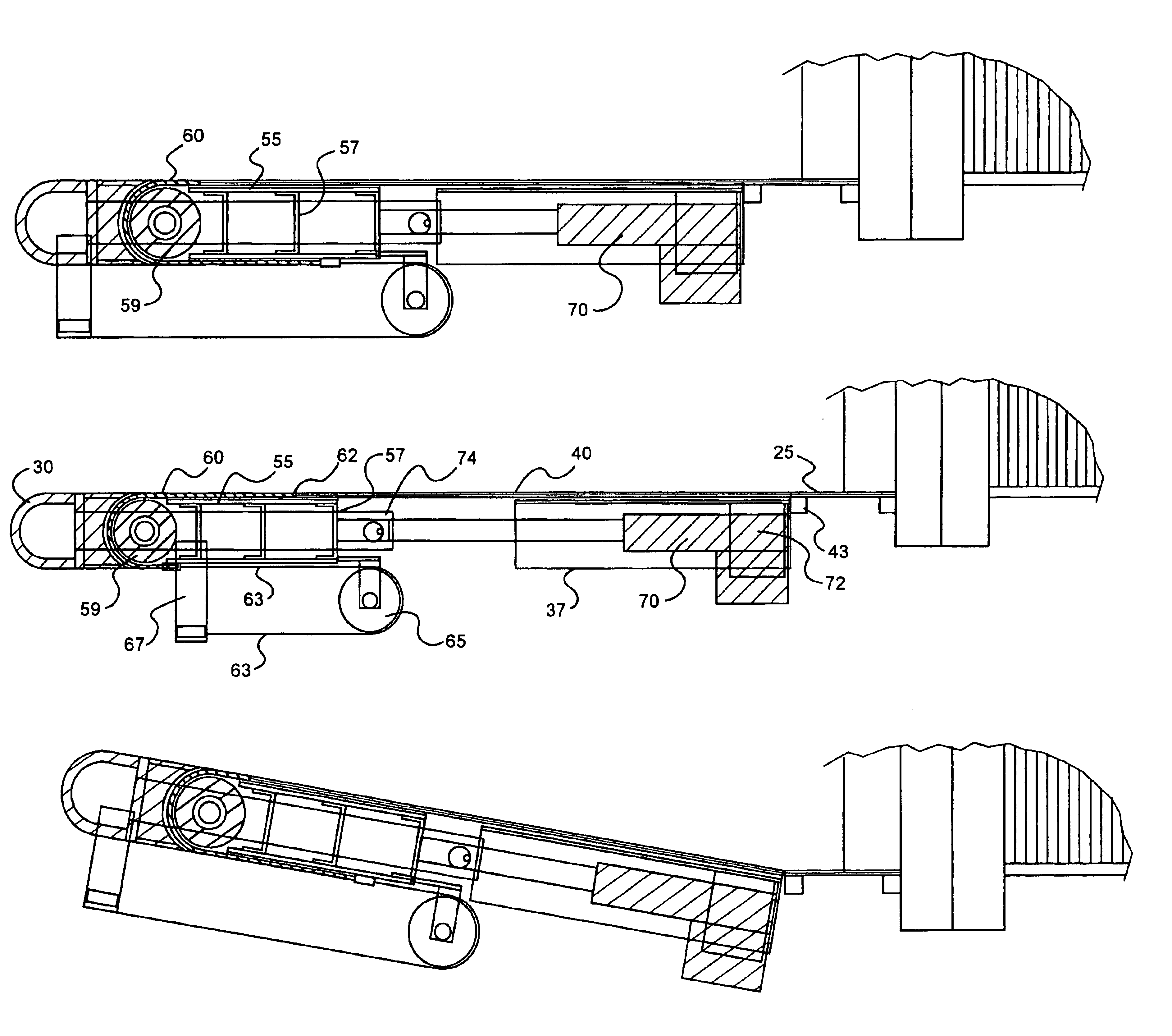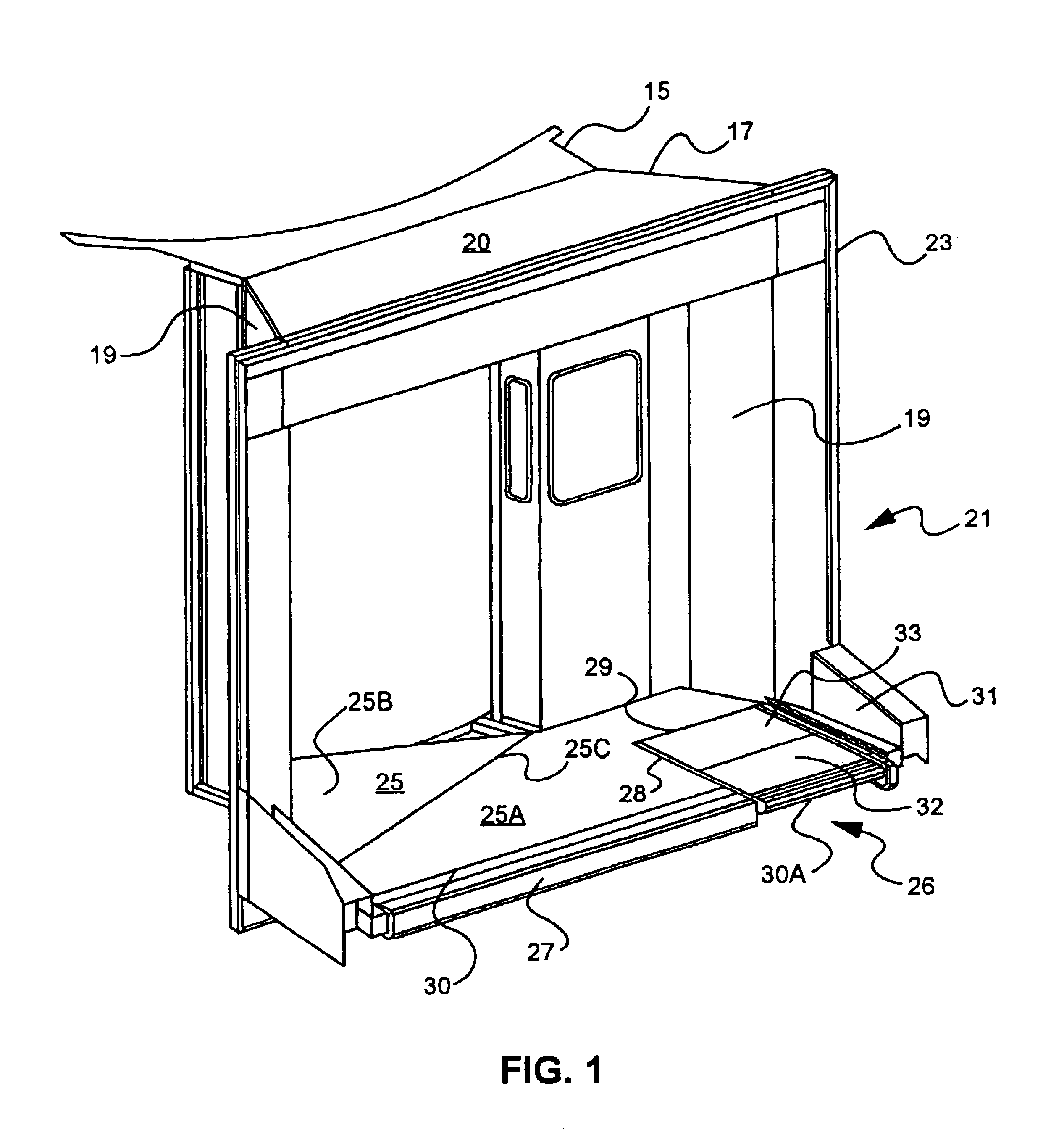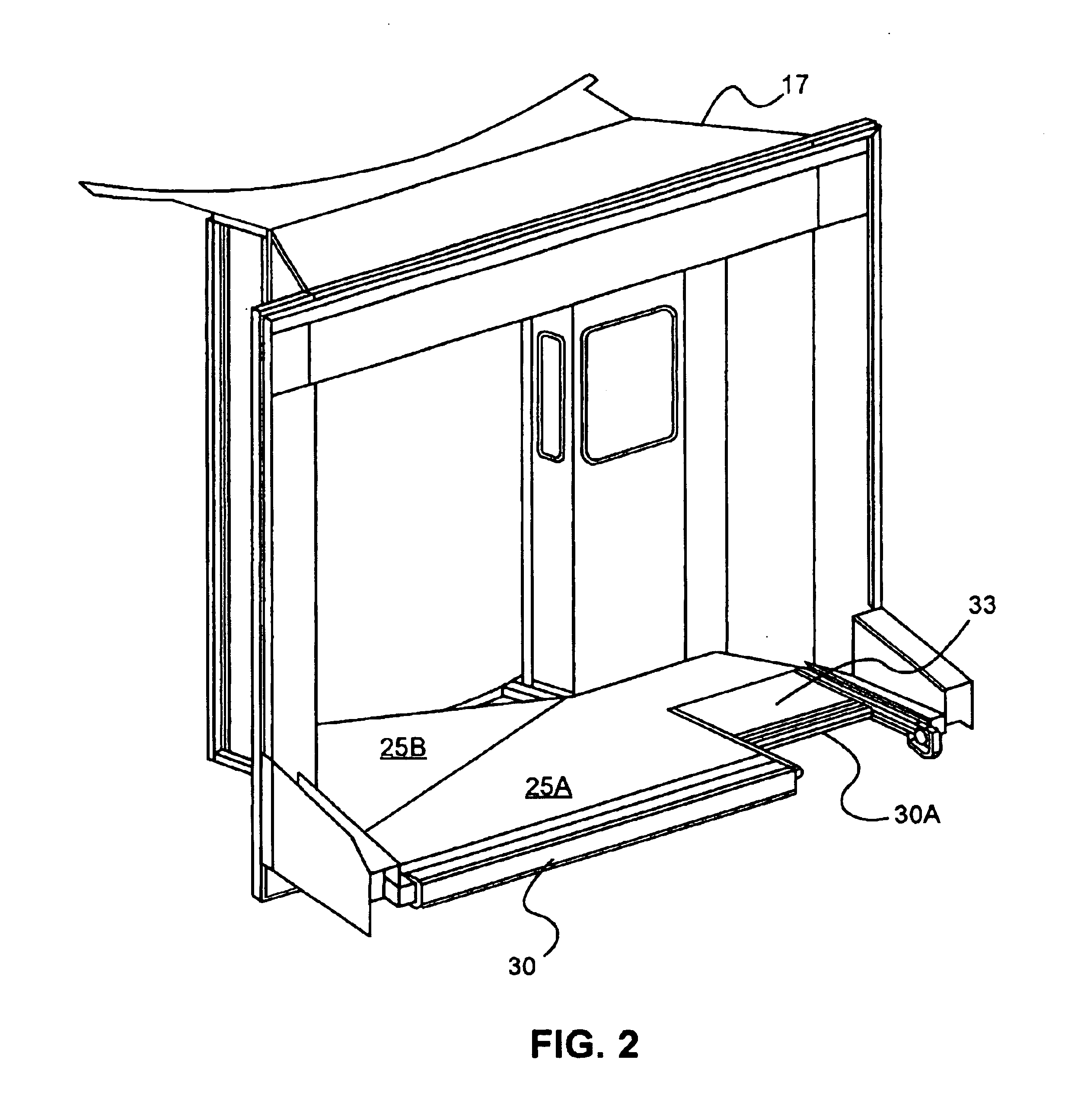Adaptable cab floor engagement assembly for commuter and conventional jet aircraft
a technology for cabs and jet aircraft, which is applied in the direction of bridges, chutes, constructions, etc., can solve the problem of accommodating the operator of a conventionally constructed bridg
- Summary
- Abstract
- Description
- Claims
- Application Information
AI Technical Summary
Benefits of technology
Problems solved by technology
Method used
Image
Examples
Embodiment Construction
[0059]As illustrated in FIG. 1, a boarding bridge 15 (shown in partial view) is fitted on its outer end with a cab 17. The cab 17 is a generally enclosed structure having a pair of opposingly positioned upstanding sidewalls 19 surmounted by a ceiling or roof element 20 which extends between the two sidewalls. The cab further includes a floor element 25. The floor element 25 extends between the two sidewalls. The cab also defines an entryway from the main boarding bridge structure. The cab 17 defines an open portal 21 which is designed to interface with the fuselage of the aircraft to be serviced by the boarding bridge. The portal 21 is defined by a framing structure 23 which extends upwardly from the floor 25 in a generally inverted U-shaped configuration. The portal frame 23 may be fitted with a canopy structure (not shown) which extends from the frame to contact the fuselage of the aircraft. A conventional accordion-like canopy is anticipated for this purpose.
[0060]The floor 25 is...
PUM
 Login to View More
Login to View More Abstract
Description
Claims
Application Information
 Login to View More
Login to View More - R&D
- Intellectual Property
- Life Sciences
- Materials
- Tech Scout
- Unparalleled Data Quality
- Higher Quality Content
- 60% Fewer Hallucinations
Browse by: Latest US Patents, China's latest patents, Technical Efficacy Thesaurus, Application Domain, Technology Topic, Popular Technical Reports.
© 2025 PatSnap. All rights reserved.Legal|Privacy policy|Modern Slavery Act Transparency Statement|Sitemap|About US| Contact US: help@patsnap.com



